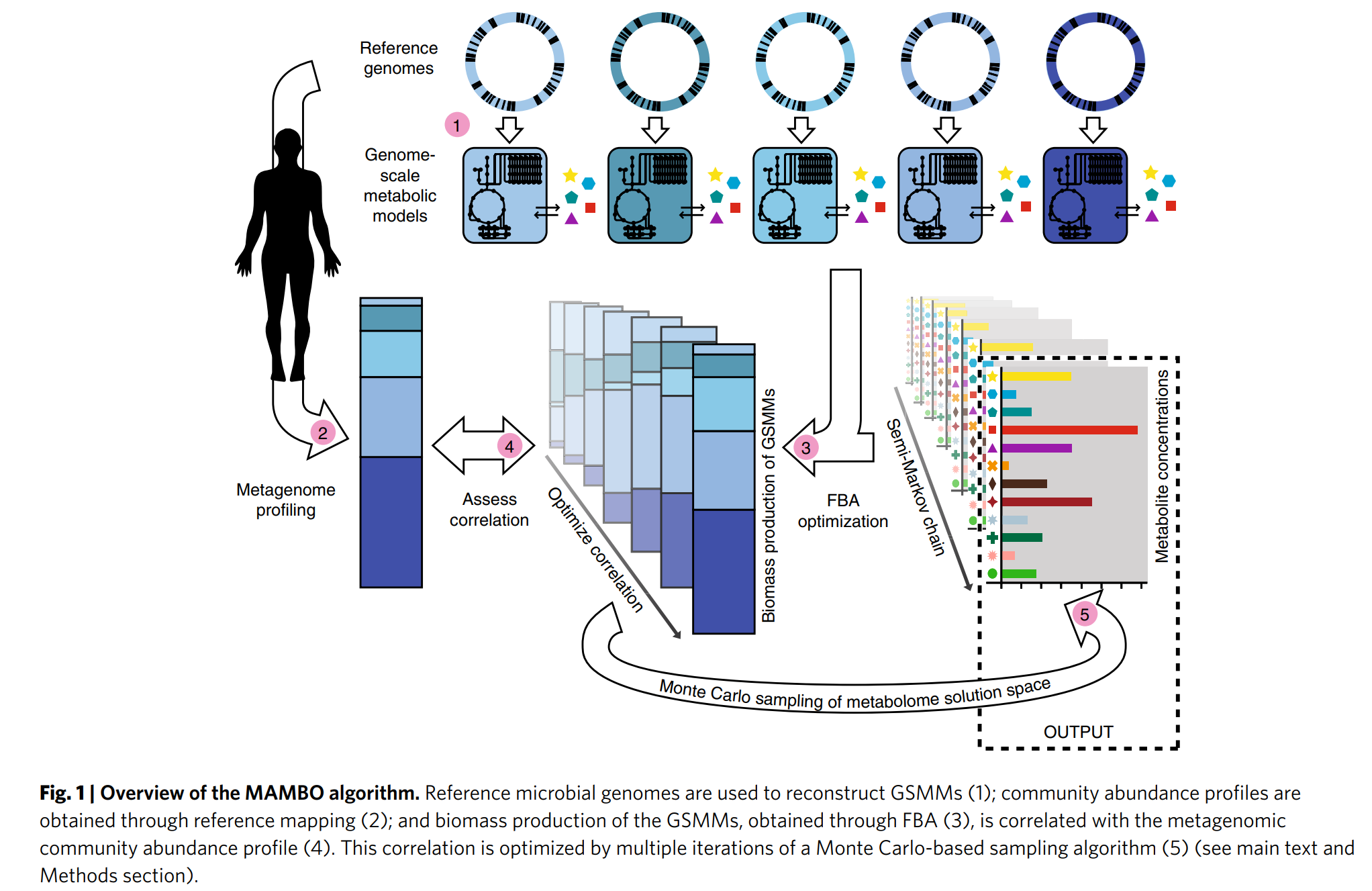Towards predicting the environmental metabolome from metagenomics with a mechanistic model (Nature Microbiology)
Towards predicting the environmental metabolome from metagenomics with a mechanistic model
Daniel R. Garza, Marcel C. van Verk, Martijn A. Huynen & Bas E. Dutilh
The environmental metabolome and metabolic potential of microorganisms are dominant and essential factors shaping microbial community composition. Recent advances in genome annotation and systems biology now allow us to semiautomatically reconstruct genome-scale metabolic models (GSMMs) of microorganisms based on their genome sequence1. Next, growth of these models in a defined metabolic environment can be predicted in silico, mechanistically linking the metabolic fluxes of individual microbial populations to the community dynamics. A major advantage of GSMMs is that no training data is needed, besides information about the metabolic capacity of individual genes (genome annotation) and knowledge of the available environmental metabolites that allow the microorganism to grow. However, the composition of the environment is often not fully determined and remains difficult to measure2. We hypothesized that the relative abundance of different bacterial species, as measured by metagenomics, can be combined with GSMMs of individual bacteria to reveal the metabolic status of a given biome. Using a newly developed algorithm involving over 1,500 GSMMs of human-associated bacteria, we inferred distinct metabolomes for four human body sites that are consistent with experimental data. Together, we link the metagenome to the metabolome in a mechanistic framework towards predictive microbiome modelling.
